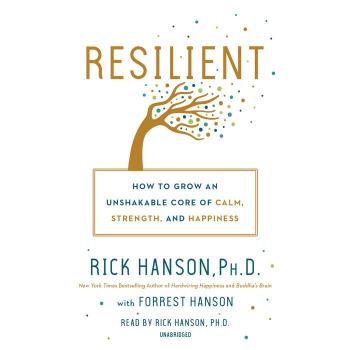Contemporary Churches by Rev. Louis F. Kavar, Ph.D.
Contemporary Churches by Louis F. Kavar, is another book that addresses the problem of the church’s inability to engage the culture. The answer, Kavar claims is a “Spiritual Transformation of the Congregation.” Kavar states that “As culture changes, so should the church. However, the church has been one place where change has been slow to happen” (8). Kavar begins his book by diagnosing the problem with the local church. For example, he notes:
“Perhaps the most perplexing dimension of congregational revitalization is the way that American culture has changed in the last fifty years…In the midst of these changes, the local church on the corner has been a fixed institution, often a stone edifice constructed by a past generation. As society and culture has changed, the church has, by and large, stayed the same.”(22-23)
I looked forward to Kavar’s analysis and how he thought that the church should change to address the cultural changes. He mentioned that decline is happening in every church (Protestant, Mainline, and Evangelical.) Kavar reviews George Barna’s book Revolution (37) in beginning his analysis.
Kavar then summarizes another book to point to his assertion about how contemporary church should change to address the culture. Kavar uses David Kinnaman’s book, Unchristian: What a New Generation Really Thinks about Christianity and Why It Matters, as the basis for his assertion for congregational change. Kavar rightly notes (88):
“In the 21st century, organizations and institutions play a very different role. No longer do people work for only one company over their life time let alone over several generations. Many families have members living in various parts of the country. Wherever we live, we participate in any number of groups or organizations and gather in a variety of settings including health clubs, coffee shops, and community rooms in shopping malls or condominium complexes…Perhaps the biggest challenge for churches today is to understand how this cultural shift impacts them. It requires moving from the understanding of the institution as a significant hub of life which encompasses family and community to understanding that individual people and their families have a wide variety of organizational connections, each of which are significant.”
This is the most significant shift in American culture. The church is not the only hub of life. Instead, it is now just one of many optional hubs (88). Kavar notes the change that many churches are making to address this shift (90):
Kavar rightly suggests that just shifting to a Progressive Christian theology is not enough. A church must also shift the way it works (90-92). Kavar uses Walter Brueggemann’s work Prayer in the Psalms as a transition point to explain that churches are also disoriented by the culture and need to take the time to reorient (96-97).
In “Chapter 2: From Death to Life,” Kavar compares the death of a church to the stages of dying by Kubler-Ross in On Death and Dying (105-107). He makes a startling conclusion: “In fact, some projections are that up to 50% of congregations in the United States will close their doors in the next five to ten years. We are facing the death of the institutional church as we know it.”
He describes the stages of the church as they go through the process of bereavement. They are mourning the change and ultimate death of the old way of doing church (105). This process is not linear. Churches can go through many of these at the same time. They can also go through them in reverse. Kavar states that Jesus went through the stages of grief before He went to the cross (112-113).
Kavar takes the reader to the death of the church and suggests the possibility of a resurrection. Even though church life changes, it doesn’t mean that it has to end (146). He describes this process in Chapter 3. In this chapter, he gives a history of the shifts from modernism to postmodernism in America (153-155). Kavar shows sow postmodernism affects church membership (156-157). Kavar shifts to describe these new congregations as postmodern communities (161). Kavar gives a great explanation why the church struggles in the postmodern era. He shares insights from Brian Sanders’ book Life After Church: God’s Call to Disillusioned Christians (172):
“In addition to these reasons for leaving, Sanders also addresses the perspective of post-modern culture. In the post-modern era in which we live, there is a distinction between absolute truth and relative possibilities. In previous eras, science was viewed as providing facts about the world. Today, our understanding of physics and other sciences is that scientific knowledge provides probable information based on certain conditions. For instance, we know that there is matter and dark matter, that gravity pulls while other forces in the cosmos push for expansion, and that things we once thought were constant are no longer viewed as constants. In the context of a worldview which held that certain truths were unchanging, traditional Christianity articulated its beliefs as fact or dogma. Traditional Christianity holds the view that there is absolute truth. However, this absolutist view does not fit with the post-modern understanding of knowledge in which truth is no longer understood as a constant but as relative.”
Kavar suggests that emergent and progressive Christian theologies and churches can address the postmodern culture better because: “Progressive and emergent Christian theologies do not view faith as fact. Instead, faith is a conviction of what is hoped for.”(169). Borrowing from Sanders’ book, Kavar suggests three elements necessary for a new model of the church: worship, community, and mission (171).
In Chapter 4, Kavar describes why it is difficult for the church to change so that it can to reach the postmodern culture. “The model of the local church as the hub for life was true for my immigrant grandparents.” (209) “This model of the church as the center of both one’s life and activities and for the life and activities of a community is very American.” (211) “American lifestyle continued to change even more following the 1950’s.” (213) “In the 1980’s, American Evangelical churches took this traditional model of church and attempted to re-tool it” (215) “At the other end, 50% of Christian churches have no more than 75 people in attendance each Sunday.” (216)
“In the first decade of the 21st Century, Sunday morning is a time for so much more than the church. Local schools now schedule sporting events on Sunday mornings. Friends meet at coffee shops to socialize or just to relax by reading the Sunday paper. Health club parking lots are more crowded on Sunday mornings than at any other four hour period of the week. In many suburbs, Sunday morning is a good time to complete yard work and other chores before pursuing leisure activities.” (216-217)
“American culture has changed radically over the last two generations. Yet, the model for the American church has remained the same.” (218) Kavar relies on Robin Trebilcock and his book The Small Church At Large as a model for a new paradigm shift that is needed to revitalize churches which are dying.
Kavan is correct in his conclusion that people today learn about religion and spirituality from a variety of sources (224-227). He concludes with the following instruction for change in the church in the postmodern era:
“The challenge facing the local church is whether or not it can make a transition from one model to another. This change isn’t just about doing things differently, like singing contemporary music, ordering worship differently, or having more young people do things that the older generation has done. Those kinds of changes are really superficial changes. The heart of the matter for congregational transformation is changing the way the organization functions both internally and externally.” (228-229)
Kavan advocates shifting away from an attractional model of church growth where the church is the center hub of life (230). Instead of worship service that starts small groups, we would have small groups that start to come together for worship (240-241). Kavan promotes basic small group multiplication principles (242-244). A church needs to develop a community, a place to belong, where people can share one’s deepest experiences (248). Kavan notes:
“In America’s post-modern culture, perhaps the single greatest thing a congregation can offer to urban people is a community, a place to belong, a place to be with others in an unconditional way and share one’s deepest experiences. That is the heart of a community of faith.” (248)
It is at this point where Kavan diverges from the traditional Christian church growth model. He suggests (250):
“In addition to the service being bilingual, in English and Spanish, each service included readings from both the Bible and other sacred texts. There was also an extended period for a guided meditation following the sermon. These two elements helped Hindus, Buddhists, and Jews to find a place to connect in the worship experience.”
I personally believe that this was a risky move to make a Sunday evening service ecumenical. Inviting Buddhists, Jews, and other faiths (and reading from their texts) can create people who believe everything but are not committed to any one faith (250).
Kavar continues:
“Instead, in this gathering place, people who were already on a journey came together and shared what was sacred to them from the journey. Because of this, the congregation was peppered with a wide variety of folks unlikely to join together: a few retired Jewish women who lived in a residential hotel; a former Buddhist monk/artist; devotees of Hindu teacher Ma Jayasati Bhagavati; and individuals from every continent on the globe.” (252)
The model that Kavar suggests requires that people who come from different faiths and backgrounds interact and share their experiences. This would be an ecumenical worship service – one which I could not endorse (252).
Kavar shares the testimony of a Buddhist who decided to be baptized but not become a Christian, during one these services “His response was perhaps the most theologically sound description of Baptism I have ever heard.” There is nothing theologically sound about a baptism of a Buddhist who doesn’t want to be a Christian (261).
Kavar is willing to let people come together from various faiths as long as they walk away with an insight that was “sacred.” And that supported their spiritual journey (262-263). How can you say that you a building a new model of church when the focus of the church is not exclusively Jesus Christ (262-263). This is not church but simply a postmodern multi-spiritual gathering. That might be fine if you want to share experiences as group, but don’t call it church. It’s not a new model of church, but no church at all.
Kavan opens Chapter 5 with the following question: “What is a church if it isn’t a spiritual community?” (264) I agree that a church is a spiritual community. However, a spiritual community does not by itself make it a church. Christ must be the Head in order for the spiritual community to be a church (264). While Kavar notes that spiritual growth is the goal of spiritual communities, I would state that the goal of a Christian’s spiritual growth is to be like Christ. One must be interested in Jesus Christ, not just some divine being.
Kavar has correctly diagnosed the church’s current problem and the culture’s difficulty. Yet, his solution is not tenable. It won’t work because Christ builds the church (Matthew 16:18), not spiritual communities. The book provides needed analysis of the postmodern culture. However, the solution is providing a Christian community, not just a spiritual community.
Disclosure of Material Connection: I received this book free from the author and/or publisher through the Speakeasy blogging book review network. I was not required to write a positive review. The opinions I have expressed are my own. I am disclosing this in accordance with the Federal Trade Commission’s 16 CFR,Part 255.














